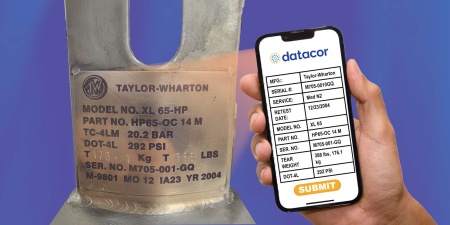Let’s say you’ve spent money and time building your website and creating a social media identity on Facebook and Twitter. You have a dedicated marketing resource working on email campaigns and a team on the phones for both inside and outside sales.
But your revenues have been unexpectedly low for the last month, or maybe your inventory is too high for a certain item, or Tuesday mornings are notoriously slow. You need to generate immediate sales. Do you have the right marketing tools to sell something right now? Do you have the right tools to sell a specific product immediately?
As you’ve undoubtedly experienced, with most marketing tools you’re up against some daunting challenges. The typical office worker already receives 88 emails a day. Research indicates that they may only open 6‒20 percent of them, and that doesn’t include legitimate emails that were caught by a spam filter. Social media requires you to “make friends” with potential and current clients. It’s time intensive, and so is getting your customers on the phone to sell them something right now. As a distributor, many of your customers might not even be spending much time on social media in the first place.
If you’re not leveraging text messaging, also known as SMS (short message service), you may be missing out on one of the most powerful technologies to drive immediate sales in the marketer’s toolkit.
Let’s look at why text messaging is effective, how it can be leveraged, where to start and some of the ground rules to respect your customers and legal requirements.
For starters, how is SMS marketing different than the toolkit you have now?
Text has phenomenal power for several reasons. There is a 98 percent open rate for SMS messages, and 90 percent of those messages are opened in under three minutes. This is unheard of in the world of email. Moreover, you are communicating with your customers on the device that they are most connected to. And research has shown that 70 percent of users actually like to receive offers by text. You’re not even bothering them.
Provided your users have opted-in to your communication and you aren’t sending excessive messages, there is no better tool to reach them on their terms, immediately, and with a more powerful framework for a call-to-action. SMS is about access and it is about right now.
“When it comes to announcing special deals and promotions, or staying top of mind with bite-size tips, there is no better way for a distributor to get their marketing into the hands of customers than with text messaging,” said Annie Eissler, a marketing professional with experience serving the wholesale distribution industry.
How might a distributor put SMS marketing into practice?
Let’s look at two ways. The first is to create a text message club, a list of customers that have opted-in to receive promotions, information and communication from your company. Your marketing team can then almost effortlessly segment this list into meaningful groups that you can reach by SMS. You might, for example, pick one of those segments and send a brief promotional discount together with an image, video and up to 160 characters of text. Your customer can act on the promotion simply by responding to the message at that moment.
Alternatively, you can work through your network of drivers and outside sales representatives. You can segment these groups as well, informing your drivers of the day’s promotion and rewarding them for sales that are closed as a result of them sharing the promotion directly with the customers.
Enrolling the drivers in a sales campaign that is simple to understand and share maximizes the valuable face time that they have with your customers. For the driver, the promotion couldn’t be easier. A simple image of the product and a link to a description is in the palm of the driver’s hand. So are the instructions to capture a sale. There’s nothing complicated about it. Text messaging remains the most popular application on the cellphone. There is no better way to reach a broad network of your customers quickly.
AWISCO President Lloyd Robinson explained the process: “With our salespeople and our counter people, we can send a text and say, ‘Hey, for the rest of your day we’re going to run a promo on x,y,z item.’”
Drivers and counter people can also be incentivized to enroll customers in the text message club to take advantage of the day’s promotion. This can generate both immediate sales and downstream revenues.
How do you know if the new sales channel is working?
Your return on investment couldn’t be clearer. SMS marketing enables a distributor to track opt-ins, opt-outs, click-throughs and total sales with ease. Marketing A/B tests are straightforward, and if certain groups of customers — or drivers — have a consistently higher response rate, it is easy to adjust target segments to maximize the value of a given audience.
What are the challenges associated with SMS marketing?
The largest one is that you can’t simply gather the phone numbers of all of your clients and send them messages, or even message your own drivers unless you are providing them with the phones. As tempting as it is to skirt this, text message recipients need to opt-in.
The Telephone Consumer Protection Act (TCPA) has mandated that all text communication be permission-based. Users must provide “express written consent” and be clear about their identity, the purpose of the text communications, the anticipated frequency of messaging and more. This law has some teeth to it — every incidence of an unsolicited text message can lead to a fine of $1,500.
Luckily, penalties are easy to avoid. Text recipients can opt-in by simply sending a keyword like MIGWELD to your number. This provides an auditable documentation trail for you — and them. If desired, they can later opt-out simply by texting STOP. SMS services make configuring many of these processes straightforward. It is, of course, common sense that the volume of messages and offers be appropriate for your audience. Close monitoring of sales, opt-out rates and target segments make this relatively effortless once you’ve set up your system.
There are some training and change management considerations to note. As with any new technology implementation, new processes are needed and employees need to understand the journey, what’s expected of them and the value it creates for their own responsibilities. Careful thought should be given to each before beginning the process of developing your list and rolling out the tool.
So, if I can’t just text the cellphone numbers I have in my CRM, how do I build a list?
As a distributor, you have a number of options. Your sales force can directly enroll customers and prospects into the text message club. This can be done through the promise of promotions, sweepstake offers, in-person event sweepstakes, offering helpful training content and more. Most SMS marketing services support these enrollment strategies natively.
Your drivers can play a powerful role with your customers as well as leveraging their face-time with customers to encourage participation in the text message club. Social media, events, email signatures, website sign-up forms and printed content can all carry a call-to-action to join the list.
And, finally, you can leverage your point-of-sale cashiers and marketing to enlist customers. Signing up for a text message club might yield an immediate discount on their purchases or generate a texted coupon for a later date. The ROI varies for every distributor, but research has shown that 20 percent off of a $100 purchase will enroll nearly 25 percent of your targets, while 40 percent will convert almost 60 percent. While the ROI of these discounts needs to be validated thoughtfully, there is no doubt that they will grow the number of your SMS recipients.
The figures around text message are staggering. Every day, six billion text messages are sent. If you’re not leveraging SMS for your company’s marketing, you are missing out on a rich tool not just for driving immediate sales, but for a broad platform of other tools as well.
“I have the ability to get messages to drivers in real time and not have to communicate individually,” Robinson said. “We just send a message to a group and they all get it. SMS is a technology that lends itself well to any distribution business. The faster an independent distributor can get out information, the better you can compete with the larger companies.”
SMS can enable you to better understand your customers likes and dislikes, communicate with your employees, share valuable information, generate reminders for appointments and much more. Messaging can be integrated with existing tools to create a unified marketing platform. It is also incredible affordable. It is possible to send 7,500 text messages a month for less than $125.
As the saying goes, the best time to start building your text message club was 20 years ago. The second-best time is today. Strongly consider adding SMS messaging to your marketing toolkit. It offers a wide-range of benefits — but no benefit more powerful than driving immediate sales.







